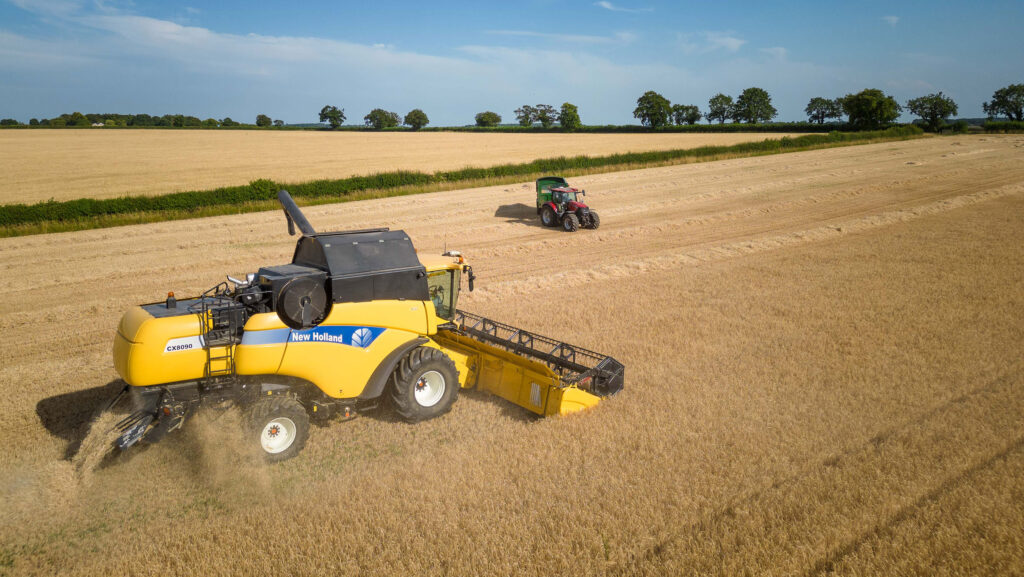Harvest 2025: A final push to the finish line
 ©Tim Scrivener
©Tim Scrivener As harvest draws to a close in the South, farmers further north are reporting strong yields and good quality across a mix of winter and spring crops.
See also: AHDB corrects UK wheat yield data blunder
Scotland
Berwickshire farmer Angus Seed finished wheat this year on the day the harvest team started last year.
He is now about three-quarters complete at Cothill Farm in Berwickshire, which is earlier than usual, despite being later to start than the rest of the UK.
“Winter barley was 10 days ahead, and all crops have ripened about two weeks quicker than normal,” he says.
Canyon spring oats are yielding well, with crops ranging from 7-10t/ha, about 1t/ha above the farm’s norm.
However, the 600ha of Laureate spring barley has been most affected by the season, with screening issues leaving some loads out of spec.
Winter wheat has exceeded expectations, averaging 10-11t/ha across 1,000ha of Graham and Typhoon.
It’s a similar story for the Resort oilseed rape, which has yielded 15% above the farm average at 4.2-4.3t/ha with excellent oil content above 50%.
Caravelle winter barley has also performed strongly, averaging close to 10t/ha. “Straw yields are 15-20% higher than average, which has been a real bonus,” says Angus.
He puts its success down to good autumn conditions and timely spring drilling, supporting strong establishment.
While not hampered by the lack of rain between February and March, the crops had just enough moisture to keep growing.
“Quality has been good across the board, other than the spring barley,” he says.
“Oilseed rape especially has been tremendous for both yield and oil content.”
North Yorkshire
Andrew Gloag at Busby House Farm, near Stokesley, finished wheat harvest unusually early on 11 August.
The Beowulf and Champion have been a mixed bag. “Yields have been very variable, ranging from as low as 5t/ha up to 11.7t/ha on the heavier land,” he says.
The Beatrix and Attica oilseed rape averaged 4.7-5t/ha, performing well despite cabbage stem flea beetle pressure.
“Establishment was decent overall, and other than some pigeon damage, the crops came through fairly well,” he adds.
Barley yields have been more encouraging, with the Kingsbarn hybrid almost out-yielding the wheat at 11.6 t/ha.
He still has about 202ha of spring beans to cut, which he expects to tackle in 10 days’ time. “So far they’re looking reasonable, but until we get in, we will never know.”
Wales
In west Wales, Geoff Thomas is nearing the finish line at Pantycoch Farm, Haverfordwest, with just 3ha left to cut.
Winter crops were generally below average, but spring crops have fared better, coming in slightly above the norm.
“The spring samples have been magnificent,” says Geoff. “We’ve only had one field over 16.5% moisture, so drying has barely been needed.”
Winter barley, all Kingsbarn, yielded 6-7t/ha, while the spring barley, mostly Skyway with one field of Belter, averaged 7.5-8t/ha.
“I was really impressed with Belter. We’re keeping 18t back for seed next year,” he adds.
Straw yields have also been strong, with about a bale an acre more than usual, he says. And he believes being just a mile from the sea has helped keep crops fresh despite limited rainfall.
“It’s still green here now, which has made a big difference.”
Essex
In the East, at Richmond’s Farm near Thaxted, Miles Leader has completed his 440ha of combinable crops across owned and contracted land.
His 45ha of Laureate spring barley, which was grown as a low-input option under the Sustainable Farming Incentive, yielded 7.4t/ha.
The 220ha of Skyfall and Illustrious winter wheat achieved mixed results, with Skyfall yielding 6.8-10.4t/ha within the same field. Illustrious averaged 9.2t/ha, with specific weight of 74kg/hl, and protein at 14.2%.
“It generally looked fairly good, but lime deficiency has been an issue, and when it’s dry, the plants just can’t pull up nutrients,” says Miles. Straw yields have also been variable across farms and fields.
“Some places have done well, but others have been down to less than a bale an acre.”

